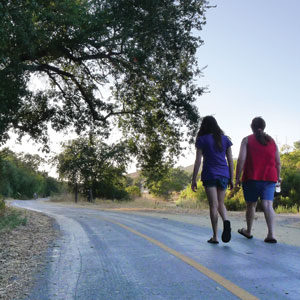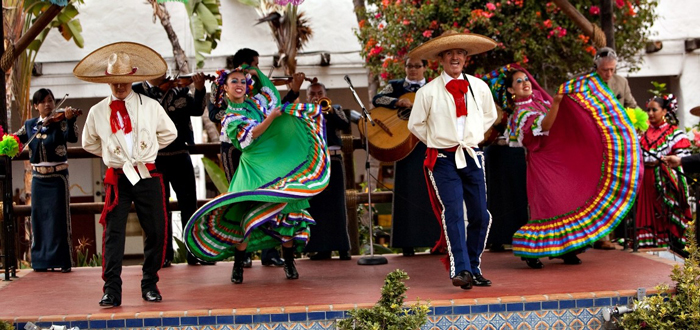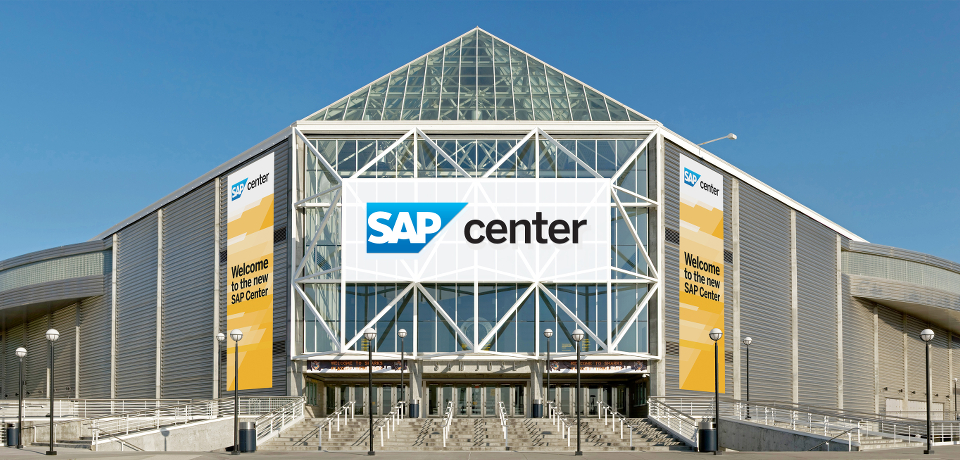For weeks, Willow Glen resident Betsy Preciado couldn’t figure out why dust covered her patio and clouded her pool. She soon noticed dusty cars parked in the business lot next to her.
“We thought maybe it was pollen from the trees or wherever,” says Preciado, whose six grandchildren visit on weekends and spend a lot of time in the back yard and pool.
Finally, Preciado remembered that the Department of Toxic Substances Control (DTSC) had mailed her a work notice. Preciado’s property borders the Willow Glen spur of the Union Pacific Railroad. Spur cleanup began in July as part of San Jose’s ambitious trails program, which will build and connect 100 miles of trails in San Jose by 2022. The multi-million dollar expansion began in Willow Glen a few months ago. Crews started ripping up vegetation, hauling out dirt and grading ground to create the Three Creeks Trail.
Concerned about the dust, Preciado called the DTSC phone number. She didn’t realize the agency supervised the removal of toxic substances like arsenic, lead and cadmium.
Preciado’s concerns increased when an agency representative left a voice-mail message assuring her that she need not worry because “the arsenic would dissolve in the water.”
“I thought, ‘Well, gee, we had our kids playing in there’,” Preciado says. “We didn’t know that.”
She continues, “The only reason we complained about it was because it was very evident. It was like a film on the patio, and our pool was dirty for a couple of weeks, and we couldn’t get it clean. Finally, we realized it was coming from the grading, and they weren’t wetting the ground the way they were supposed to.”
DTSC says in a statement that it “believes there were not any significant releases of contaminants into the air to pose any risk. Excavation of the contaminated soil has been finished and clean soil is being placed to backfill the excavations.”
Councilman Pierluigi Oliverio, whose district includes Willow Glen, says his office received just one complaint from a mother who was also concerned about the dust kicked up by the work. The problems, he says, ceased once workers started watering the ground properly. But he points out that the state cleans up the project, not the city.
“Otherwise, this project’s nearly done and everyone is going to get this nice, long 10-acre green trail,” Oliverio promises.
The Willow Glen spur, part of a rail line until the 1970s, needs cleaning before the city of San Jose can purchase the land and convert it into trail space.
The way in which the toxic substance removal was announced unsettled some Willow Glen home and owners. While almost no one opposed expanding San Jose’s trails, which are city-funded sometimes until reimbursements come through, a handful of residents and homeowners say no one informed them about the cleanup.
An employee at a nearby insurance agency says she didn’t know about the trails project until a neighbor brought in a copy of the work notice.
“It’s been a real nuisance,” said David Durham, president and CEO of Applied Engineering, which sits on Lonus Avenue on the very north end of the cleanup. “It’s been going on for two or three weeks. We got no notice, no real warning.”
Costs of Connecting
Trails Program manager Yves Zsutty says it has taken eight years to gather the $6 million for the Three Creeks Trail, which will occupy land between Lonus Street and Minnesota Avenue. A land purchase, funded from several city, county and state sources, should go through in November.
{pagebreak}
The trail, aligned west to east in a wide U-shape from Lonus Avenue to Interstate 280, will eventually connect the Los Gatos Creek, Guadalupe River and Coyote Creek trails.
“The most important thing is it’s the only east-west connector in all of San Jose,” explains Taisia McMahon, president of Save Our Trails, a grassroots trail advocacy group. “All the trails run north and south, but you can’t get east to west, which is not very useful.”
The cleanup project runs along approximately 4,235 feet of land that cuts past back yards and business property lines in Willow Glen. Work will continue through October.
While Preciado and business owners like Durham have called the dust a disturbance, it hasn’t been the only source of commotion caused by the Three Creeks Trail cleanup.
“There was a lot of ivy in that path where the railroad was,” Preciado says. After it was torn out, “the rats and the mice and the skunks and the raccoons all had to find new places to live. Some of them jumped the fence and some of them ran up our trees and through our yard.”
There are the typical construction-related complaints about trucks taking up parking spaces and noise and traffic congestion.
But Oliverio says all of the people he has spoken to about the project did receive the DTSC notice, and he hasn’t received complaints about the congestion.
“At the end, it’s construction and there will always be traffic, whether you’re building a school or a building or whatever,” Oliverio says.
McMahon acknowledges that the cleanup is a nuisance. But, she says, making San Jose more accessible requires sacrifice.
“There is going to be a certain level of inconvenience and difficulty, created by the cleanup and construction of this trail. It’s inevitable,” McMahon says. “Whatever inconvenience and difficulty it creates, the civic amenity that it will become will outweigh the inconvenience tenfold.”











